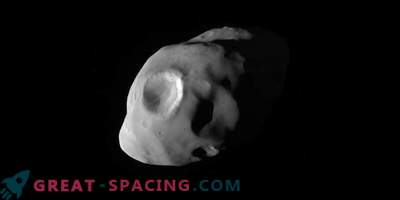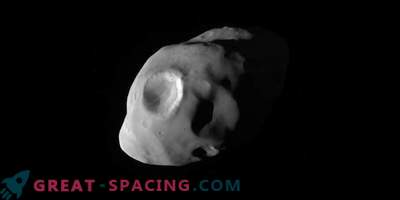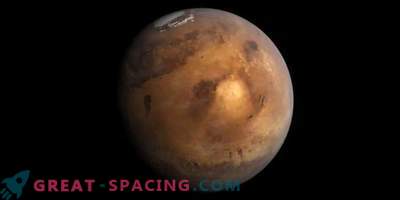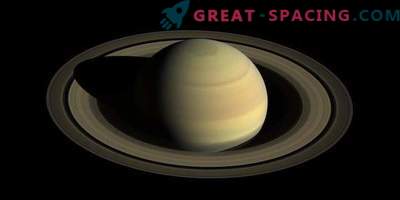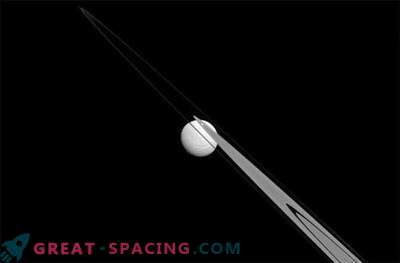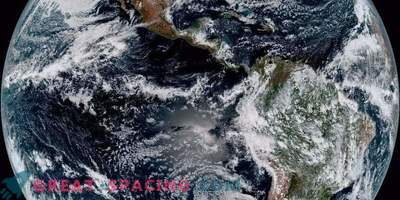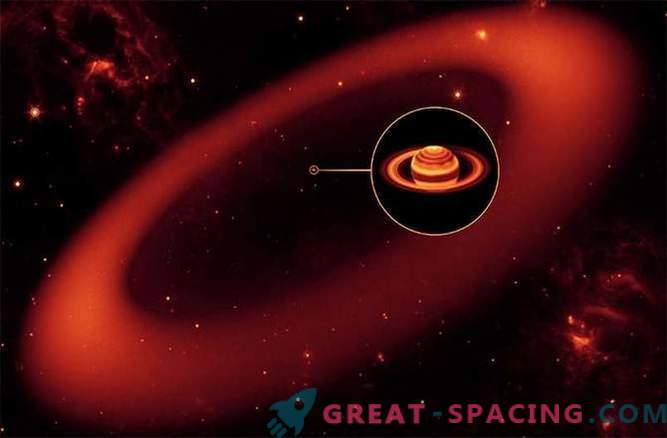
As new research shows: Saturn’s dimmest ring, which cuts a massive band around its home planet, covers the sky almost 7,000 times larger than Saturn itself.
Analysis of NASA images using infrared cameras of the WISA telescope show that the ring discovered in 2009 consists mainly of small particles. A cobblestone the size of a soccer ball, this is only a small part of its composition. Scientists who have published an article in “Nature” note that this led them to take a fresh look at the physics of the creation of distant rings and their durability.
The most distant ring of Saturn is also called - Ring Rapidly (ring “Phoebe”). It is assumed that it was formed from particles of dust and ice emitted from the satellite of Saturn - Phoebe, after micrometeorite or other effects on it.
The ring is inclined at an angle of 27 degrees relative to the other seven known rings. And just like the moon of Phoebus, it has a reverse direction to the orbit of Saturn. NASA's infrared space telescope - Spitzer discovered the ring back in 2009, and in 2012 its first optical image was taken, taken by Cassini - an orbiting satellite of Saturn.
New studies show that Phoebus’s ring is about 3,7 million miles from Saturn. And branch out to a width of up to 10 million miles horizontally and 1.5 million miles vertically. Which makes it 10 times larger than previously assumed. According to Douglas Hamilton and colleagues in the weekly “Nature”, Phoebe's ring is superior to E's and is the largest ring of Saturn.
“The new observations of this ring provide a detailed view of the complete disk, including an image of the structure and composition, which can tell how the ring was formed,” the scientists note in “Nature”.



